If you are reading this blog, chances are you didn’t find it by accident. Which means by now, you have heard the news that back in March, Microsoft announced Microsoft Dynamics 365 Copilot. With such an announcement comes great fanfare as companies begin to ponder what it means to launch an AI-driven copilot for use with large scale ERP and CRM tools. Microsoft still dominates when it comes to the office productivity suite and are now looking to take the same tools to tackle generating valuable insights into data from many data sources and automating repetitive tasks.
Customers in the Dynamics 365 space were already seeing the early stages of AI with rollouts of Intelligent Order Management (IOM), Supply and Demand Insights, and Demand forecasting capabilities. Supply chain center has now taken many of those same technologies and feature sets and created a centralized cockpit or control tower for supply chain users to manage and react to the key events and issues that impact customer delivery and satisfaction. In one view, this was the next logical step. IOM provided a structure for companies to manage order fulfillment through a rule-based system backed by real-time omnichannel data, AI, and machine learning. This allowed organizations to easily merge information across data sources, multiple ERPs, CRMs, POS, and other systems and reduce time to act to any disruption. AI-driven forecasting and collaborative planning tools allowed sales directors, demand planners, and inventory managers to measure the impact to inventory shortages, vendor on-time delivery, and new product introduction.
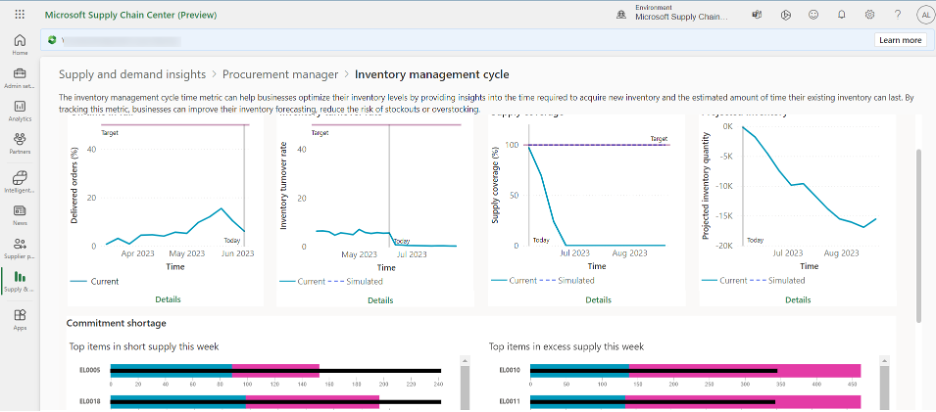
This latest release of Copilot takes the Supply chain center and makes it even more powerful. Users can leverage existing data and connections with suppliers in the Dataverse to find high impact events that may affect their supply chain. Welcome to digital-supply-chain! | Microsoft Learn For example, an aircraft part supplier going bankrupt impacts you as a business or perhaps some of your major vendors and customers. Using an impact model with AI in Copilot, Supply chain center can highlight a news article that included this event with a category and impact score and propose suggestions for contacting those partners affected by it. The system is capable of then auto-populating an email proposal with information regarding the news article.
The below diagrams show an example starting with reviewing the news article, then selecting for review, and finally contacting the partner and selecting the appropriate email draft template.
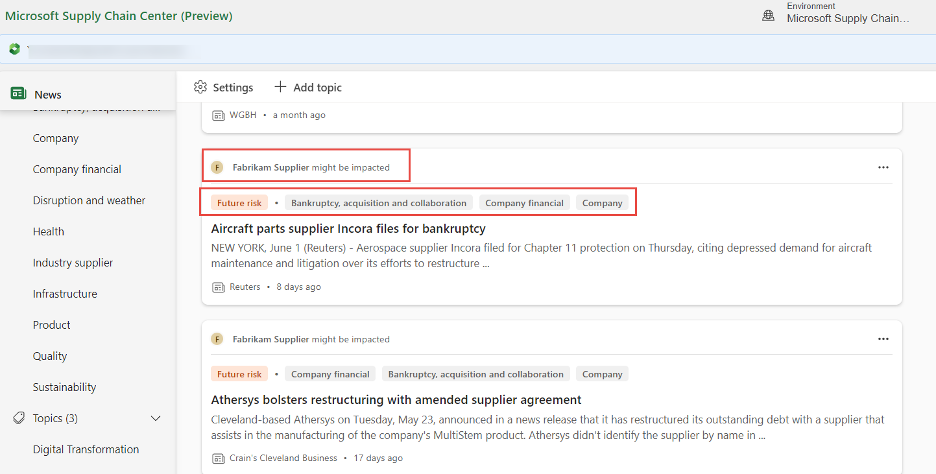
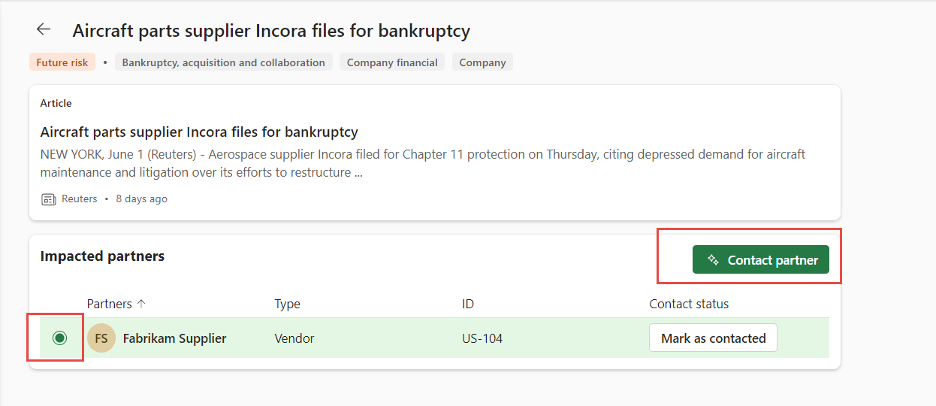
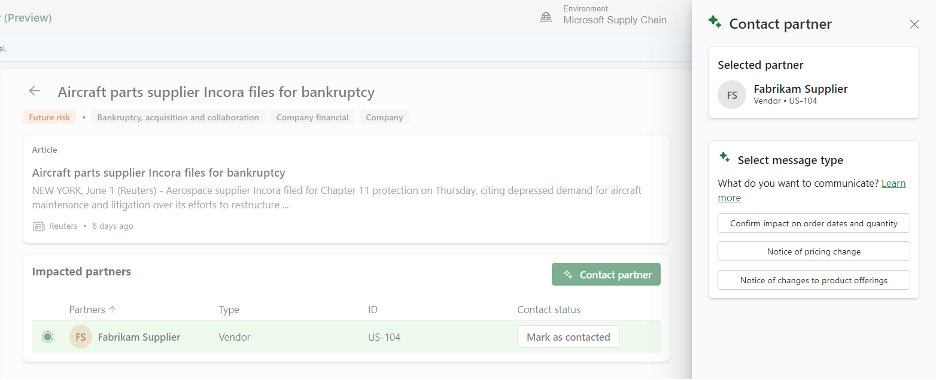
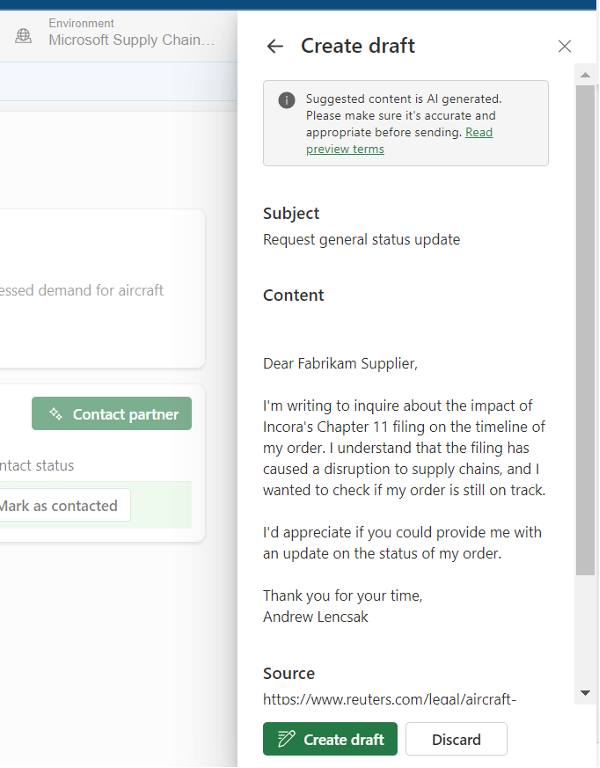
If you’re wondering about how the model was trained and limitations, there are some important considerations. First, the News system has only been trained to support English language articles. What does this mean? Well, it means that accuracy on categories, impacts, and their relevance will be lower for non-English languages. In addition, the system only uses sources found as news articles in Bing News at this time. Since all of the information the AI is being trained on is publicly available information, smaller organizations news events may not be found. Similarly, the accuracy of the news article is not part of the training, so it is the obligation of the user reviewing the information to use it responsibly. From a technical standpoint, the news communication generates e-mails using a text-davinci-003 generative AI model. It uses Azure Open AI’s Content Moderator to help validate the response, and an NGram-based relevance filter to ensure that the response is on topic. To ensure relevancy, the model uses the title and snippet from the news article, the user-selected topic, and up to five upcoming open purchase orders as inputs.
We’ve all been waiting to see what impact AI and chatbots will have on our jobs in the short-term. In the Dynamics space, there are already real tangible takeaways. It may sometimes just look like a central place for an RSS feed, vendor order collaboration, key performance indicators, and supply chain data… but re-read that again and understand how rare that is. Being able to connect to spreadsheets, Microsoft products, SAP products, and virtually any option then visualize and transform that into reductions in lead times, cost, quality issues, and overhead is a major advantage. There are numerous use cases for such a tool and process: private equity firms needing oversight on legal entities across ERP products, companies undergoing an implementation of software technologies with phased rollouts, or a planner monitoring your own stock data as well as third-party logistics (3PL) warehouse inventory.






